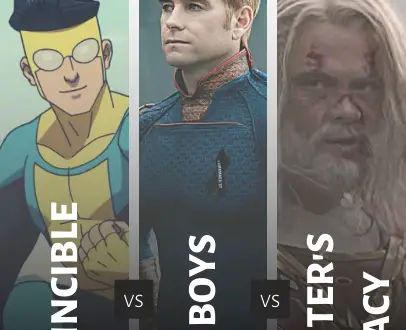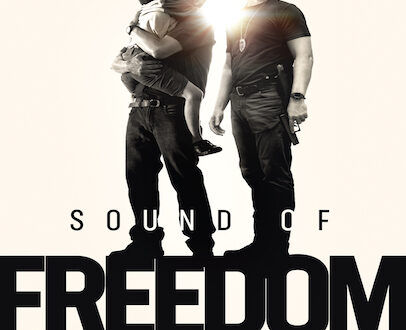Is Where the Crawdads Sing Racist? | The Shocking Truth
Where the Crawdads Sing
Director: Olivia Newman
Date Created: 2022-07-15 00:00
5
“‘Jest an ol’ ni**er walkin’ to town. Watch out, ni**er-boy, don’t fall down,’ they taunted Jumpin’, who kept his eyes on his toes.” (pg. 95, Where the Crawdads Sing).
Immediately after I read those words I looked to the inside of the back cover to double-check the race of this book’s author. Yup, still a white lady.
What business does she have using the n-word in her book?
This had me thinking – is Where the Crawdads Sing racist?

Where the Crawdads Sing is a story like no other. The book, more than the movie, vividly illustrates the lonely reality of an abandoned little girl named Kya, who learns to survive in a Marsh primarily on her own. An eclectic story that somehow seamlessly blends the genres of historical fiction, romance, legal drama, and mystery, Where the Crawdads Sing stirs up an endless amount of fascinating conversation.
One popular conversation surrounds the morality of the book’s author, Delia Owens.
Delia used the N-word (with the hard -er) in the book which, as a black person, is gutting to see or hear. However, the author is just honestly illustrating the racial tension that existed back in the 50s and 60s in a small town in the Confederate state of North Carolina. It’s nothing personal, just something that a racist character would say, not a racist author. Right?
Not long after the racist tirade which included the taunting boys throwing rocks at the harmless and kind-hearted black man named Jumpin’, Kya angrily knocks the boys over the head with a heavy bag filled with jars of jam. (BTW, this interaction only takes place in the book. It is not included in the movie.)
Kya is justified in her act of physical violence because she is defending a helpless, powerless man from hateful, racist, verbally AND physically abusive children. Kya is the white savior in this narrative. She is the good guy who takes pity on less-than civilians.
Kya’s actions are done to protect the “small” guys and this only foreshadows more sinister “justifiable” actions that take place later in the narrative.
I shrug off the sting of that racially-charged interaction and continue to enjoy the expertly crafted novel that beautifully illustrates the physical and inner world of Kya and the characters in her life.
After finishing the exhilarating novel, I was absolutely intrigued by the author’s mind. Delia Owens, how did you come up with this unique story? Where did this inspiration come from?
Where the Crawdads Sing Controversy
Delia Owens has extensive knowledge of marsh biology, literature, and law, and spent years as a wildlife biologist with this novel being her first one at the age of 73. How is it that your first and only fiction book reads like you’ve been creating mind-blowing stories your whole life?
I immediately had to do some research and found this shocking article about Delia Owen’s real life. It turns out that her reality isn’t so different from Kya’s.
Much of Delia Owen’s life was dedicated to studying wildlife in isolated regions of African nations such as Botswana and Zambia with her only company being her then-husband, Mark Owens, and wildlife creatures.
Delia and Mark Owen’s mission in Zambia was to protect elephants from elephant poachers, people who kill elephants to harvest their tusks for commercial use. This mission of theirs involved doing everything and anything to protect the elephants’ lives, even if it meant ending the life of the elephant poacher.
A documentary showcasing their elephant preservation mission in Zambia included footage of a human being, classified as an elephant poacher, being shot by someone off camera who is assumed to be Mark Owen’s son from a previous marriage, Christopher Owens.
Not long after this incident, Delia and Mark were forced to flee from Zambia and have stayed in the USA since then. They are still wanted by Zambian authorities for questioning regarding the murder that took place in 1995.
When questioned about this incident by the Atlantic, Delia’s response was, “Why don’t you understand that we’re good people? We were just trying to help.”
Delia is justified in her alleged involvement in an act of physical violence because she was defending a helpless, powerless species from hateful and physically abusive people. Delia is the white savior in this narrative. She is the good guy who takes pity on a less-than population.
Notice any parallels here?
Delia Owens lived in an isolated environment away from society like Kya.
Delia Owens was accused of murder like Kya.
Delia Owens bore no children like Kya. (This is a bit of a random comparison but shows how much the author bases the details of Kya’s life on her own life.)
Kya was later revealed to be guilty of the crime she was pardoned for unlike Delia … yet…
Where the Crawdads Sing Racist Accusations
Digging deeper into the heart of Delia Owens, this Atlantic article further dissects Owens’ frequent infantilization of the black Africans of Zambia, with her dialogue for them making it seem as though they have no knowledge of modern civilization or a decent education. As if their minds are not as advanced as her own.
This accusation that the Atlantic makes of Delia based on how she wrote her past non-fiction novels is not far off from the way she writes her dialogue in Where the Crawdads Sing.
1. The story implies that Black people are unintelligent.
In Where the Crawdads Sing, Delia Owens crafts the Southern, broken dialogue phonetically to best illustrate the way in which the character speaks.
For example, at the beginning of the book, when Kya is about 6 years old, her dialogue looks like this: “But Ma’s carryin’ that blue case like she’s goin’ somewheres big.” (pg. 14)
That sentence is not grammatically correct but it illustrates the manner in which she spoke when isolated from civilized society.
As Kya learns to read and becomes more educated, her dialogue takes on a more recognizable structure. This – however, is not the case for educated black characters.
Owen’s interpretation of Black vernacular is likened to the speech of someone with a lack of education. She writes uneducated speech and Black speech with the same broken, misspelled, and over-apostrophized style.
Jumpin’, the black store owner who takes it upon himself to support Kya after her family abandons her, speaks in a broken, Southern, “uneducated” dialogue for the entirety of the book.
Jumpin’ knows how to read and is wise enough to have the capacity to run a successful business that serves both Black and White people. Why is his grammar still so poor?
His dialogue looks like this: “Thanktha Lawd she’d been in Greenval at the time ’a his death, or they’d’a put this on ’er, Jumpin’ thought.” (pg. 276)
And Mabel, Jumpin’s wife has a similar manner of speaking as well: “’Lawd, he loved ya like his own dawder,’ Mabel said.” (pg. 319)
The same goes for Jacob, the black jail guard. His dialogue looks like this: “Course I can. I’ll do that, Miz Clark; I sho’ will. Can see he’d be mighty good comp’ny.” (pg. 257)
Why does he talk like that? Especially as a guard? He doesn’t owe Kya anything yet addresses her as if he’s her servant.
This brings me to the second piece of evidence of implicit racism behind the story – all of the black characters were in positions of support for the white characters. That was the only role they were given in the story.
2. The story implies that Black people are subservient to White people.
Jumpin’ and Mabel were selfless supporters of Kya who took it upon themselves to help Kya in every way in spite of their own needs. We don’t hear about their struggles as black people in a racist environment. We don’t know anything about them. Their sole purpose in the story is to support the white outcast, Kya.
In the movie version of Where the Crawdads Sing, there is a point where Jumpin’ begins crying at the thought of someone hurting Kya. Really??, I thought. Yeah, you may be protective over her, but crying? That’s just a little too dramatic for me. It felt as if Jumpin’ didn’t have a life outside of supporting Kya.
Perhaps because Kya was regarded as sub-human by the preppy, condescending ladies of the nearby town and Karen-ed away by every well-groomed white woman, the only people who treated her respectably were those who were regarded as being on the same social level as her – Black people.
Kya’s exclusion from society was likened to that of a Black person in the 50s and 60s. A white, earthy girl raised in the wild was treated to the same level of social relevance as a Black person. The only difference though is that once she became successful, people started respecting her more and treating her as their own. For Jumpin’ and Mabel, no matter how successful they became, they would always be forced to sit outside the courtroom away from the White people for no other reason besides their level of melanin concentration.
While Kya can read a few books and gradually speak like Shakespeare, Jumpin’ can do his taxes yearly and still speak like he’s never opened a book in his life.
So to answer the question, Is Where the Crawdads sings racist?
Not intentionally so.
I believe that there may be some implicit bias involved and a boxed-in, limited role that black people were allowed to play in the narrative, but keep in mind, Delia Owens is 73 years old. She lived through the Civil Rights movement. It’s not surprising that she could potentially harbor some backward views on black people especially when she’s spent more time getting to know wild animals in African nations rather than the African people of African nations.
However, the reality of this story is that it is not necessary for there to be ANY black characters in this story at all. Mabel and Jumpin’ could have simply been kind-hearted white people. And Jacob could have easily been a kind, white jail guard. Race NEVER had to be a topic of conversation in this book, and the story would have been just as good.
Delia Owens knows a lot about a lot of different topics, but one of those topics is NOT how to write realistic, non-stereotypical black characters. I think that there would be less racial controversy if she stuck to her area of cultural expertise.
Despite the upsetting backstory and implicit bias that may have potentially played a part in this story, Where the Crawdads Sing is one of the most finely crafted narratives of this decade. It’s not worth missing out on due to some thoughtless racial insensitivities.
The focus of this movie is obviously not on the black experience in the 50s and 60s. It has nothing to do with racial relations. This story is about how people adapt and adjust when they’re not receiving the necessary amount of human interaction.
Given that the focal point of the story is to peek into the mentality of an affection-deprived human, it succeeds phenomenally in bringing that concept to fruition.
Where the Crawdads Sing Book vs Movie
Rarely do I read the book before the movie but this book was recommended to me by a friend before I even knew the movie was happening.
After consuming both the book and the movie, there is no doubt that the book is exceptionally better than the movie.
The book illustrates the inner world of Kya so vibrantly with words alone. The readers built a genuine sympathy for her and gain a deep understanding of her thoughts, motivations, and actions.
Meanwhile, in the movie, Kya feels so one-dimensional.
My biggest gripe with the film is that Kya does not look like a Marsh Girl. She looks civilized, her shack is instead a well-structured wooden cabin, and she blends rather seamlessly into the town environment.
She doesn’t look out of place at all which makes the prejudice against her lose all reasoning.
In the book, Kya is described as a wild beauty. Part marsh creature, part human. I expected messy, tangled hair, sun-stricken skin, ill-fitting clothes, and frantic, antisocial mannerisms. Kya in the film felt too normal to be ostracized. Too clean. Too well-put-together.
The effects of her isolation were not elaborated on in the movie.
Having to condense the book into a 2-hour film does mean cutting down on some details and deciding which scenes matter the most.
While the film really did a great job at illustrating the most pertinent scenes in the film, it fell short with building believable, heart-moving characters.
The film felt like a surface-level reenactment of the book rather than bringing the book to life. The characters in the book felt real and the characters in the film felt like paid actors.
If I were to rate the book, it would be a 10/10: the movie, 5/10.
In Conclusion…
Where the Crawdads Sing is a captivating tale that highlights the way loneliness can thwart the mind and redefine morality.
Within this narrative are Black characters who receive the backburner treatment, utilized to aid the main character in her pursuits and used as a reference point for the level of Kya’s social disregard.
If you’re black and reading this book or watching the movie, you will not feel empowered. Most TV and movies have no intention of empowering black people and that’s fine. The world doesn’t revolve around us.
I would not classify Where the Crawdads Sing as intentionally racist. However, is it racially insensitive? Yeah.
Rating: 5/10
Did you think Where the Crawdads Sing is racist? Let me know in the comments below!
And be sure to subscribe for the latest blog updates (form in sidebar).
Peace, love, and lots of popcorn,
IMO











4 Comments
alyssa
to say this movie is racist…is to say that people of the 60s were as they are today….well…they weren’t….and right wrong or indifferent…they were especially openly bigoted in the 1960s south….we really need to stop applying our current standards….to how people were..as ignorant as they were…and pass judgment on a movie whose setting was in the 60s….thats as bad as accusing a movie that depicted how many Germans treated jews in nazi Germany using the vernacular of that period…as anti-semitic. …I thought it was an overall touching movie..I watched it twice not because it was boring..but because it touched me emotionally…the black couple was integral to the movie….not put in to empower anyone…but to show how the human spirit…loving and kindness conquers all…they didnt pass judgement on this little girl like everyone else in town did…instead they saw a little girl and helped where they could.
IMO Flicks
To be honest with you, I initially viewed the movie the same way you did, understanding that this was just an honest depiction of the racial/social climate back in the 60s. It wasn’t until I did research on the story that I realized a lot of people were concerned about whether it was racist or not. Having thought about it further and learning more about the author, the mind that created this story, it’s entirely possible that implicit bias could have come into play. My only critique then is that the black couple didn’t have to black at all. If, as an author, you’re not sure how to authentically portray black characters with dignity, then don’t include them in your story. The story would have been just as impactful if Mabel and Jumpin’ were white. That’s really my main argument there. I really appreciate you taking that time to comment because you bring up a very important point 🙂
Maggie
The scene in the movie that was most “racist” is when the agent for Social Services calls Jumpin, “boy”. Jumpin and Mabel could not say anything that would draw attention to themselves as being uppity. That is the true picture of North Carolina in the 50s and 60s.
IMO Flicks
I forgot about that scene! (Ngl, the movie was so boring I had to watch it in 4 settings) There was another scene too where Kya ran into Chase at Jumpin’s store, so Jumpin just let him take whatever from his store for free?? That was weird to me. The “boy” reference and the passive presence just put Jumpin’ in such a subservient light. Thanks for commenting! 🙂